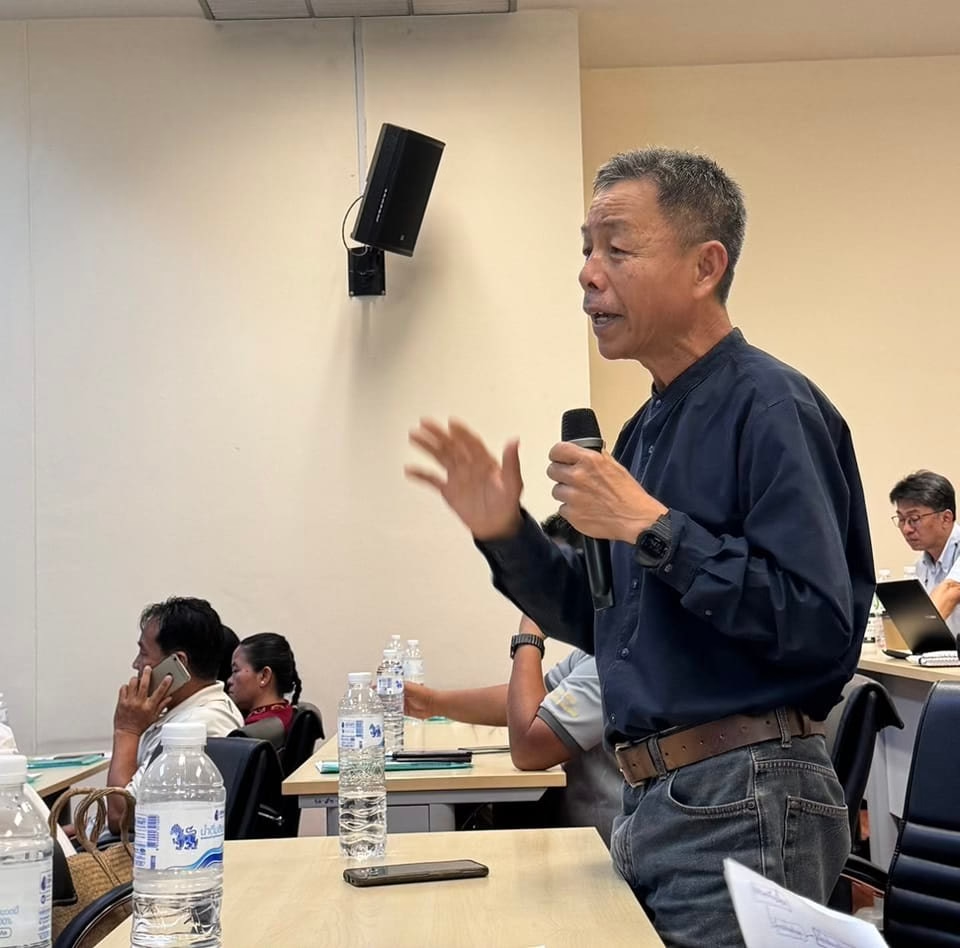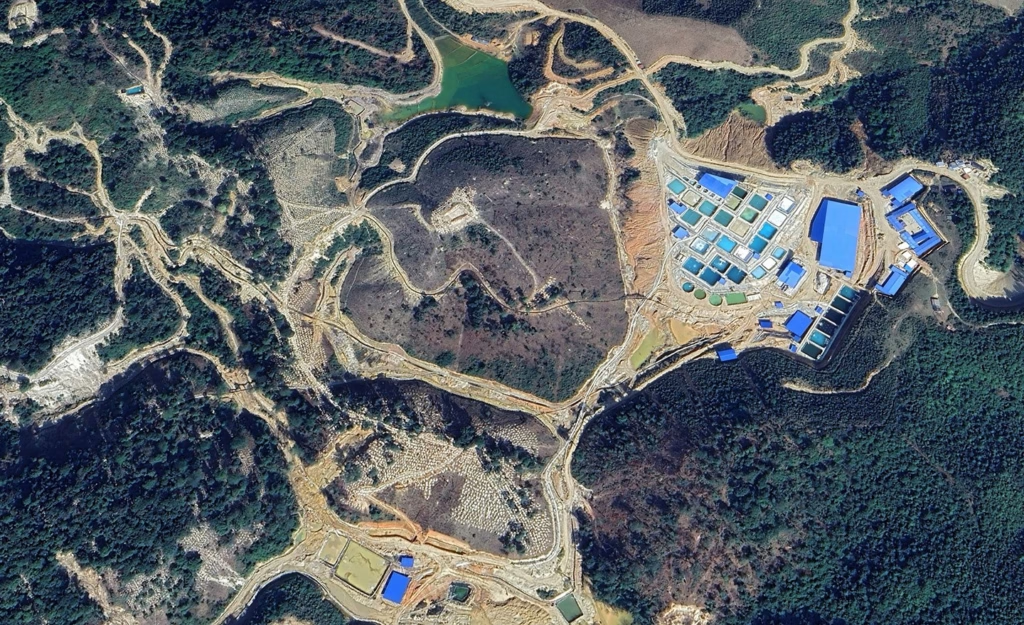CHIANG RAI – The rare earth mines near the source of the Kok River, in areas under Wa Army influence in Myanmar, still use outdated extraction methods that even China has stopped using. This causes severe cross-border pollution and harms businesses all along the river.
Tourism along the Kok has collapsed, with visitors to “Ban Ruammit Elephant Camp” and river cruises dropping by about 90%.
Gold and rare earth mining began around the Kok River headwaters in Yon Township, in Special Region 2 (United Wa State), and in Mong Hsat District, Shan State, Myanmar, from 2024 onwards. The operations have damaged water quality in the Kok, Sai, and Ruak rivers, as well as the Mekong, which flows through Chiang Mai and Chiang Rai.
Despite growing concern and criticism from downstream communities in Thailand, the mines are still running at full scale. Instead of addressing the problem, operators have covered key parts of the sites with black tarpaulins to hide them from satellite images.
Pranom Choemchaiphum (above), an environmental activist and committee member of the Chiang Rai Lanna of Happiness Assembly, explained that the pollution in Thai rivers starts on the Myanmar side.
Mines have sprung up along the Kok and Sai rivers, clearly breaching the UN Convention on Biological Diversity. Myanmar has signed this agreement, yet continues to allow large numbers of gold, manganese, and rare earth mines, among others, to operate along its rivers.
Rare earth mines in Shan State extract 17 to 18 types of rare earth elements using an old method that even China has phased out. Operators inject chemicals into the mountains to dissolve and flush out the minerals. This process heavily contaminates soil and water around the mines and destroys local ecosystems.
Pranom urged the Thai government to move quickly and open talks with Myanmar to tackle the problem. If nothing changes, he warned that Thai people could face long-term toxic exposure similar to Japan’s Minamata disease.
Even if action begins now, he believes it would still take at least 10 years to restore the rivers to near normal conditions. For local people, the damage has already started, especially for those who depend on tourism, which has been hit hard.
Lha Phumphairawai Chuen, from the Chiang Rai Human Rights Network, said the Kok River was once a major tourist attraction. After test results showed pollution and arsenic levels above safety standards, locals became afraid to touch the water. Tourism has slumped, from riverboat trips to riverside shops and elephant camps.
“Ban Ruammit Elephant Camp in Mae Yao sub-district, Mueang Chiang Rai, has had to dam a creek so the elephants can drink that water instead of the Kok River. Local residents have also had to look for new water sources. Overall, tourism activity has fallen by around 90 percent, leaving only about 10 percent of the previous level,” he said.
According to reports, the Tai Yai Human Rights Foundation and Thai agencies have been tracking mine locations in Shan State that could affect Thailand. This monitoring increased after the Sai River turned unusually muddy in January 2024. At that time, officials in Mae Sai District identified four mines.
The first two, a manganese mine and a gold mine, are located in Ban Mae Jok and Ban Na Yao in Mong Hsat District, west of Tachileik. Both use water pumped from the Sai River for their operations.
The other two mines, for manganese and zinc, lie in Ban Nam Pung Mai and Nam Phu Ron Mai in Mong Hsat District, next to tributaries of the Sai River, Nam Pung and Nam Phu.
These mines also rely heavily on water from these tributaries and sit inside Special Region 2 (Wa).
Satellite images have also revealed at least two rare earth mines. One site lies between Yon and Mong Hsat District, around 25 kilometres from the Thai border at Mae Ai District in Chiang Mai, and roughly 3.6 kilometres from the Kok River.
The second mine is on the opposite side of the Kok, about 2.6 kilometres from the river, in an area bordering the territory controlled by the Myanmar military government and Special Region 2 (United Wa State).
In addition, northern Shan State, near the Chinese border, hosts many more rare earth mines that raise similar concerns.















